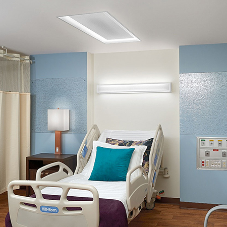There’s nothing more important in a workplace than the well-being of its staff members. This is not only true from an altruistic point of view, but also from a business standpoint. The Centre for Mental Health has calculated that the UK economy loses £8.4 billion per year from absenteeism due to mental health issues.
Whilst this number is huge, it pales in comparison to the staggering £15.1 billion that the same source estimates the UK loses in presenteeism from mental health issues. Presenteeism is defined by the Centre for Mental Health as “reduced productivity when employees come to work and are not fully engaged or perform at lower levels as a result of ill health”.
This statistic adds credence to the theory that those who are happier and more fulfilled in their work are more likely to be productive, worthwhile employees and less likely to leave for another company.
Continuing on from the recent success of Mental Health Awareness Week, we thought we would take this opportunity to promote mental well-being within the workplace, and how a few simple changes can bring about a huge improvement to the mental health of a staff.
1. Talk to the staff
This incredibly simple starting point can have huge effects for the well-being of an office. Promoting an atmosphere of openness and honesty between employees and management will lead to greater trust and happiness throughout the entire workplace.
The conversation doesn’t have to be intrusive or formal. Simply letting colleagues know that your door is always open for a chat can go a long way. Checking in on people frequently and responding to their feedback can lead to increased trust between management and staff and may help to identify any underlying resentments or disputes before they turn toxic.
2. Natural life
The news is constantly full of stories about how social media usage and screen time is negatively affecting our personal lives, but we never really consider just how much these same issues are prevalent in our work lives now too. Computer usage has been at the centre of office work for generations, and with the advent of social media in the workplace, it’s harder than ever to remove yourself from a screen at work.
Try to offset this unnatural screen time by bringing natural elements into the office. You can start with the simplest things like opening the blinds and windows across the windows of the office. Increased exposure to natural light and fresh air positively impacts everything from Vitamin D consumption to lowering stress levels. A simple link to natural life can make a huge difference to the mentality around a place, even at a subconscious level.
You can expand upon this by buying plants to go around the office that are easy to care for. Taking ownership and care of these will give a small sense of purpose to the caregivers and more greenery in a manufactured environment is never a bad thing.

If you have access to your building’s roof, then installing and maintaining a green roof, like the M-Tray® from Wallbarn, can be a great project for staff to participate in. Heading outside and into the fresh air will provide a welcome break from the potentially drab interior of the office; whilst taking care of the flora is a project that the green-fingered ones in the office will love!
3. Bring Your Dog to Work Day
Speaking of adding some life around the place, why not take part in Bring Your Dog to Work Day, happening this year on the 21st of June! The office dog is becoming a more frequent staple nowadays, with our furry friends bringing joy to offices across the world.

A study quoted by The Guardian found that “self-reported stress declined for employees with their dogs present and increased for non-pet owners and dog owners who did not bring their dogs to work”.
We can put this down to many factors; the unconditional love that a pup will give to anybody in the office being the obvious starting point. But also taking the dogs for a walk at break times will give colleagues a vital opportunity to get out of the office, away from their screens and out in the natural world for some time. Long walks in the fresh air are just as important for humans as they are for dogs!
If Bring Your Dog to Work Day once a year is successful, then expand it out to a rate that the office is comfortable with, perhaps once a month. Or if your office turns out to be desperate for doggos, then they could end up becoming a permanent fixture!
4. Set Manageable Goals and Reward Staff in Varying ways
The Chinese culture of the 996 work week (9am-9pm, 6 days a week) has recently begun making headlines over here. On the surface, this may seem like a far stretch from the hours we traditionally work in Britain. However, for many, the reality of their working week may not be too far away from this number of hours, even if they may still ‘officially’ be working 9-5 hours.
Many modern office workers feel like they simply can’t switch off at any point in the day, due to the grind of having been through university, fighting a wildly overcrowded graduate job market, and then feeling like they must continually fight and prove themselves to remain once they have a job. The popularity of LinkedIn means that the workplace has even become a place for people to try and snapshot their perfect lives. The grind for perfection can easily become mentally overwhelming and draining.
Positive reinforcement, therefore, goes a long way amongst any group. With workers giving up over a third of their lives to benefit their companies, it’s only right that the company shows a bit of gratitude back!
Try to have a mixture of both group rewards and individual incentives so that the high flyers are rewarded for their input, but those with more role-playing jobs don’t feel undervalued either.
The reinforcement rewards don’t have to be purely financial. An extra day of holiday, a group cinema trip or simply taking the office on group walks are great ways to invigorate the workforce and hopefully everybody comes back from the office break feeling energised and motivated to put more work in for a company that they know appreciates them.
A BrightHR study concluded that “A less stressed, more engaged workforce, who are inspired and become more creative through play, will be more productive – and ultimately have a positive impact on your bottom line”
5. Office Design
Creating a space where staff can come for sanctuary from the stresses of the office can be invaluable for reinvigoration and relaxation. If you ensure that all staff know that work-related business is off-limits in this area, then it will quickly become a positive and popular space to unwind during break times.

This installation from Style Partitions is a great example of such a space. The refurbishment of this office was done specifically with employee well-being in mind. The forest themed design on the partition invokes a calming sense of nature and the 55Rw dB acoustic integrity ensures a serene atmosphere within the rooms that the partitions can create. Designing an area such as this one is a great way to show staff that you are taking active measures towards improving their well-being in the workplace.
6. Charity Work
Doing good for others has an incredible impact on one’s own self-worth and happiness levels. It gives a chance to create bonds with people in work that you wouldn’t normally connect with and learn about the life experiences of those less fortunate than ourselves.
Charity in the workplace can encompass a huge amount of activities, from short walks and cake sales to gruelling mountain climbing challenges. If a challenge can get people physically active or allows them to learn a new skill (such as baking) then that is yet another benefit to the overall well-being of the staff.
You can pick whatever suits you, and best of all, anybody in the office can get this started! If the company puts their weight behind it too then that’s even better. You can donate to causes within your own local community and have the mental boost of seeing first-hand the benefits of your good deeds.
The practice makes sense from a bottom-line perspective too. A study commissioned by Foresters found that, “when faced with a choice between two companies that offered products and services for the same price, 82 per cent said their decision would be affected by whether a company engaged with charities and its local community”.
Here at Barbour we recently took part in our own charity day, raising over £10,000 for Cheshire Young Carers, a local cause close to our hearts. A fantastic 10 mile walk in the sunshine was a great chance to bond with colleagues from all over the office, whilst getting in touch with the beautiful greenery that our little corner of the world has to offer! The mental reward of knowing we all did something to help those in our community who need it most was the most thrilling reward of all.

People dislike talking about mental health because they find it a scary or embarrassing subject. The best way to combat this is to bring the issue to the forefront. Show how you want to positively change attitudes towards mental health at your workplace. Try to have a positive impact in your staff and colleague’s lives. You won’t be able to change everything for them, but knowing that their workplace isn’t a daunting, toxic environment can have a huge impact on a person’s well-being. We spend more time at our workplace than we do anywhere else, make it a positive place for yourself and those around you.
Related Blog Articles



crop192.png)












